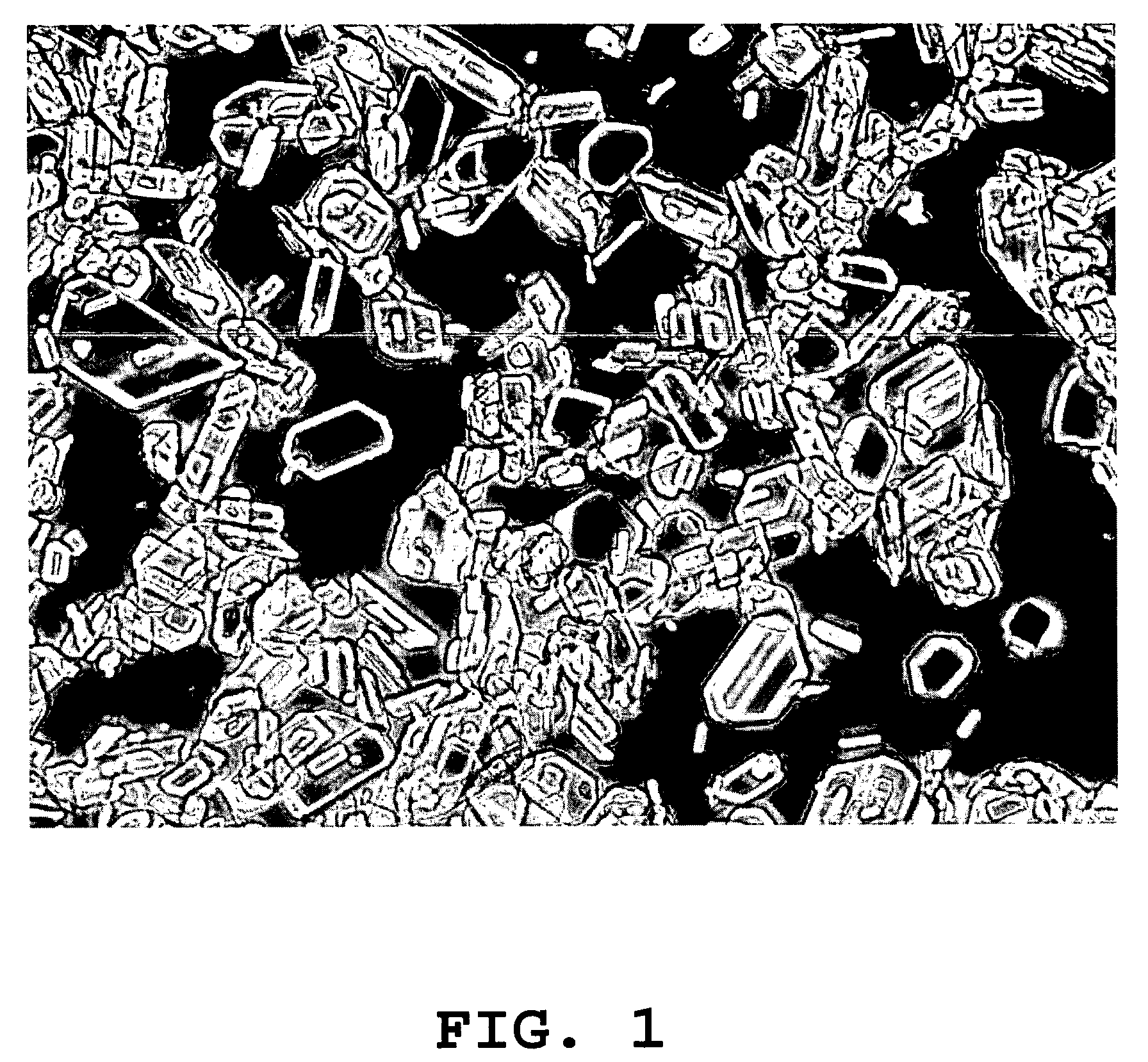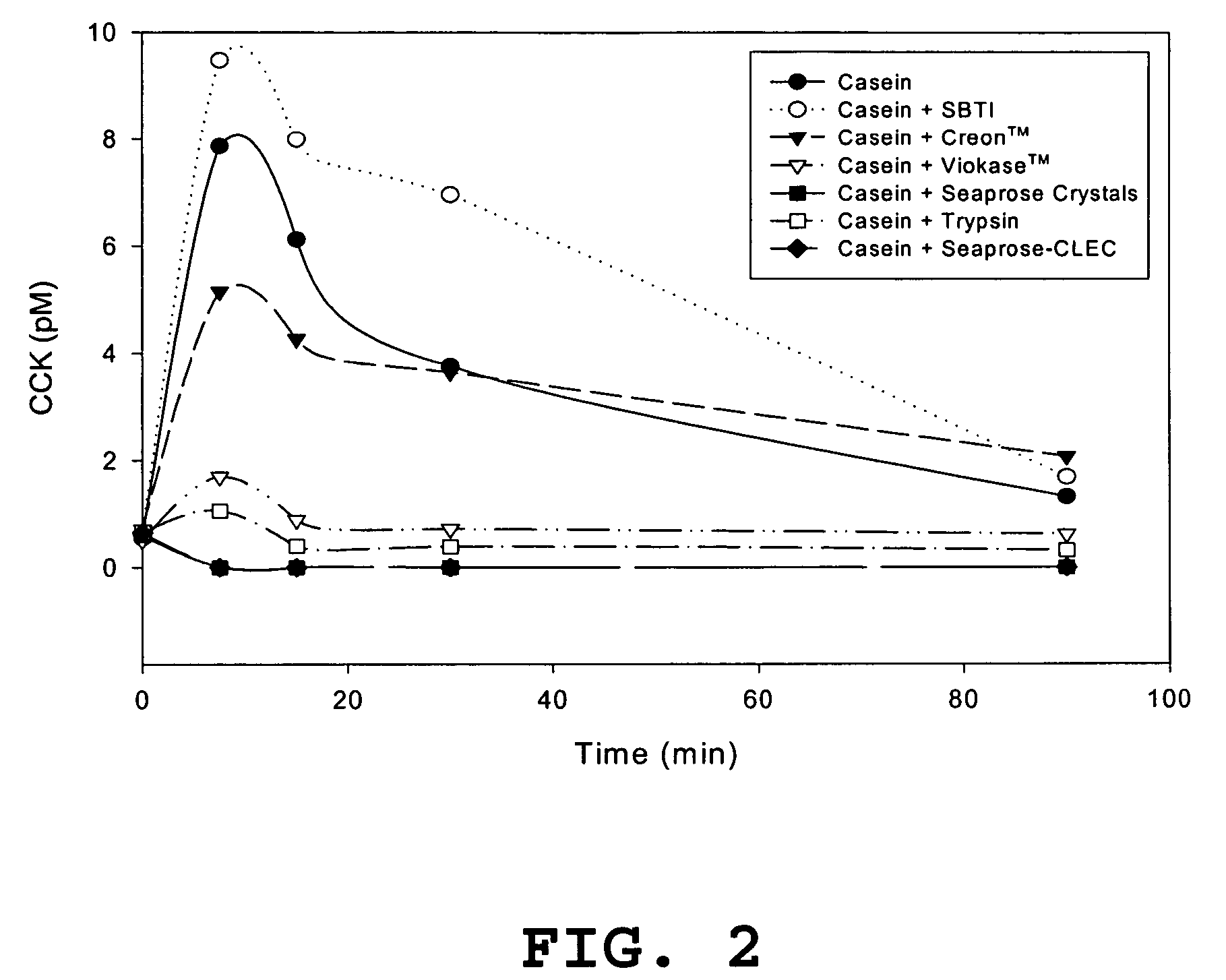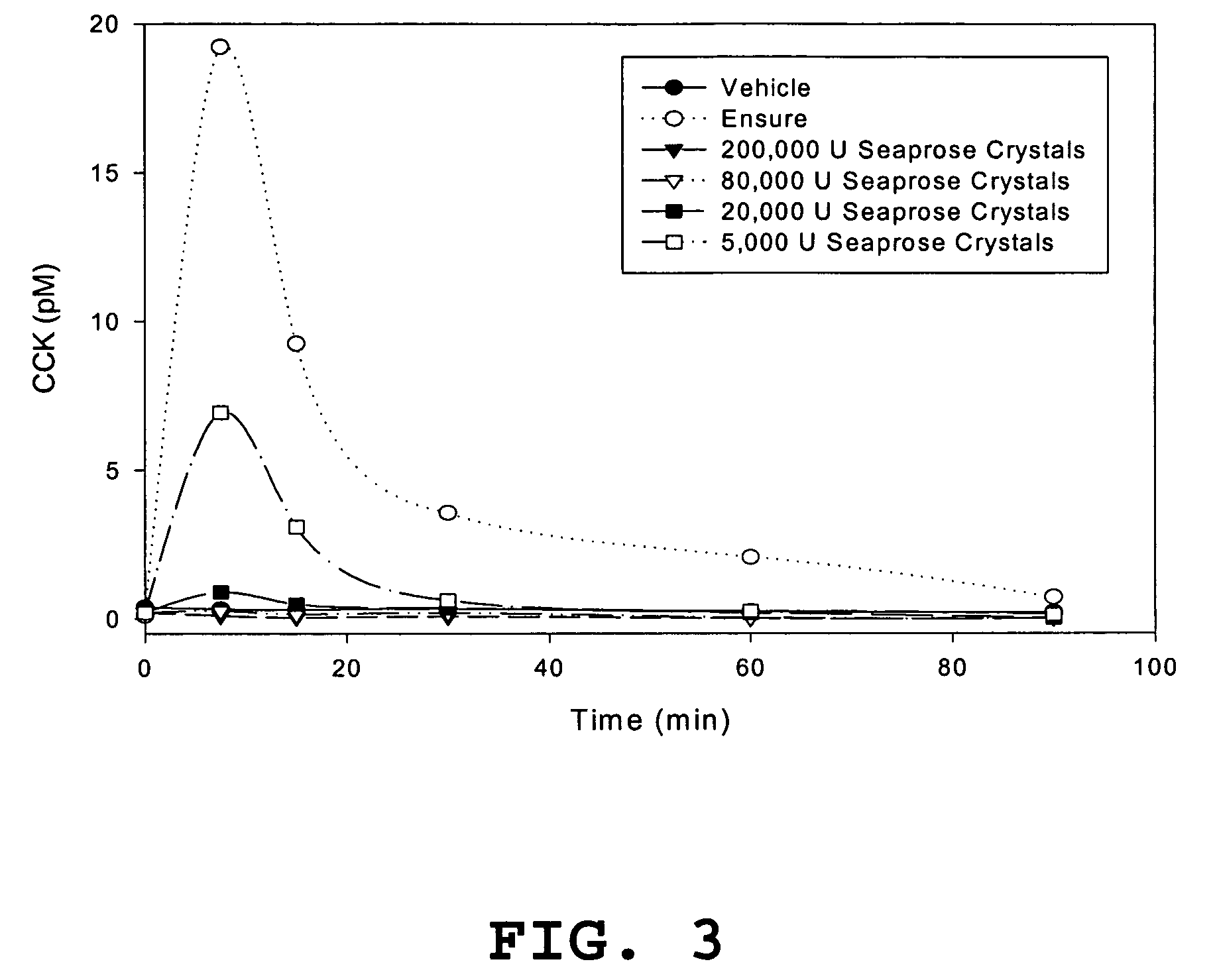Treating abdominal pain due to pancreatitis with seaprose
a technology of seaprose and pancreatitis, which is applied in the field of treating abdominal pain in a mammal, can solve the problems that pancreas fails to produce and/or secrete enough digestive enzymes to support normal digestive processes, and the success of pancreatic extracts in treating abdominal pain is limited, so as to reduce the plasma concentration of cck and the basic level of plasma cholecystokinin
- Summary
- Abstract
- Description
- Claims
- Application Information
AI Technical Summary
Benefits of technology
Problems solved by technology
Method used
Image
Examples
example 1
[0092]Crystallization of seaprose. Raw seaprose powder (100 g, approximately 70% pure) was dissolved in 1000 ml of 10 mM sodium carbonate, pH 9.50. The resulting seaprose solution was then sterile filtered in a hood by passing it through a 0.22 μm filter (Nalgene). The solution was stirred overnight on a magnetic stirrer at 4° C. The following day, the resulting crystals were separated from the solution by centrifuging at 2,000 rpm (Beckman centrifuge Model GS-6R with GH 3.8 swinging bucket rotor) for 20 minutes and the supernatant was subsequently removed. Crystals were again washed with a minimum volume (80 ml) of 10 mM sodium carbonate, pH 9.50 and re-centrifuged at 3,000 rpm for 20 minutes. The wash supernatant was then removed and the crystals were re-suspended in a total volume of 1.2 L (10 mM sodium carbonate, pH 9.5), AbS280=34 mg / ml, and a milky solution formed. The re-dissolved crystals were allowed to stand for 2-3 days at 4° C. for additional re-crystallization. The fina...
example 2
[0093]Crosslinking of seaprose crystals. Crosslinking was carried out using glutaraldehyde (final concentration of 1%). Twenty mls of seaprose crystals, as prepared above, (20 mg / ml in 10 mM sodium carbonate, pH 9.5) was treated with 800 μl of 25% glutaraldehyde solution for 24 hours at 4° C. with tumbling. The crosslinked crystal solution was concentrated to a final concentration of 20-25 mg / ml under sterile conditions. After 24 hours, the crystals were centrifuged and washed (5×) with 10 mM Tris buffer, pH 7.0.
example 3
[0094]Plasma CCK response to diet with various exogenous enzyme supplementations in rats. Rats, each weighing approximately 350 grams, that had been conventionally group-housed and given access to water and laboratory chow ad libitum were randomly divided into eight treatment groups and further subdivided into five cohorts, and each cohort had three rats. All rats were fasted overnight (20-22 hr) and the next morning (between 7-9 am) were orally administered, post-operative (PO), 5 ml of liquid into the stomach via a feeding needle attached to an orogastric tube. The 5 ml aliquots were prepared from components shown below for groups 1-8. For example, the treatment for group 1, vehicle, contained 5 ml of water, group 2, Casein control, contained 900 mg casein in water to yield a final volume of 5 ml, group 3, Casein+seaprose crystals, contained 900 mg casein plus 144 mg (201,600 USP units) of seaprose crystals in water, group 4, Casein+trypsin, contained 900 mg casein plus 1000 mg (1...
PUM
| Property | Measurement | Unit |
|---|---|---|
| pH | aaaaa | aaaaa |
| time | aaaaa | aaaaa |
| time | aaaaa | aaaaa |
Abstract
Description
Claims
Application Information
 Login to View More
Login to View More - R&D
- Intellectual Property
- Life Sciences
- Materials
- Tech Scout
- Unparalleled Data Quality
- Higher Quality Content
- 60% Fewer Hallucinations
Browse by: Latest US Patents, China's latest patents, Technical Efficacy Thesaurus, Application Domain, Technology Topic, Popular Technical Reports.
© 2025 PatSnap. All rights reserved.Legal|Privacy policy|Modern Slavery Act Transparency Statement|Sitemap|About US| Contact US: help@patsnap.com



